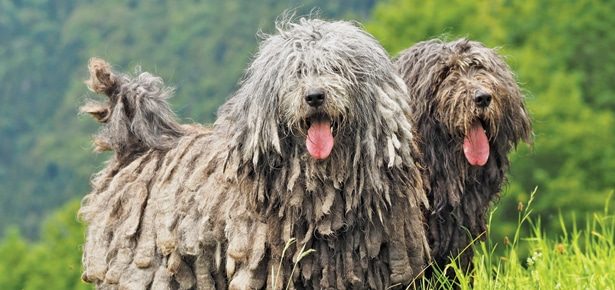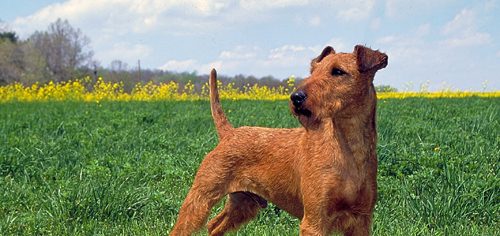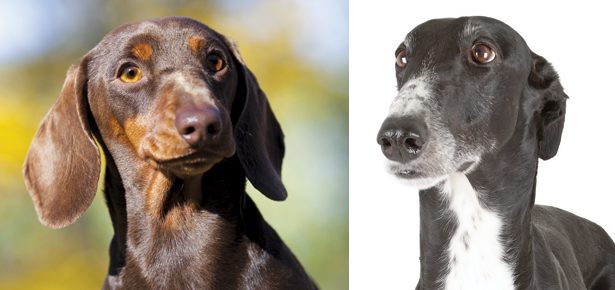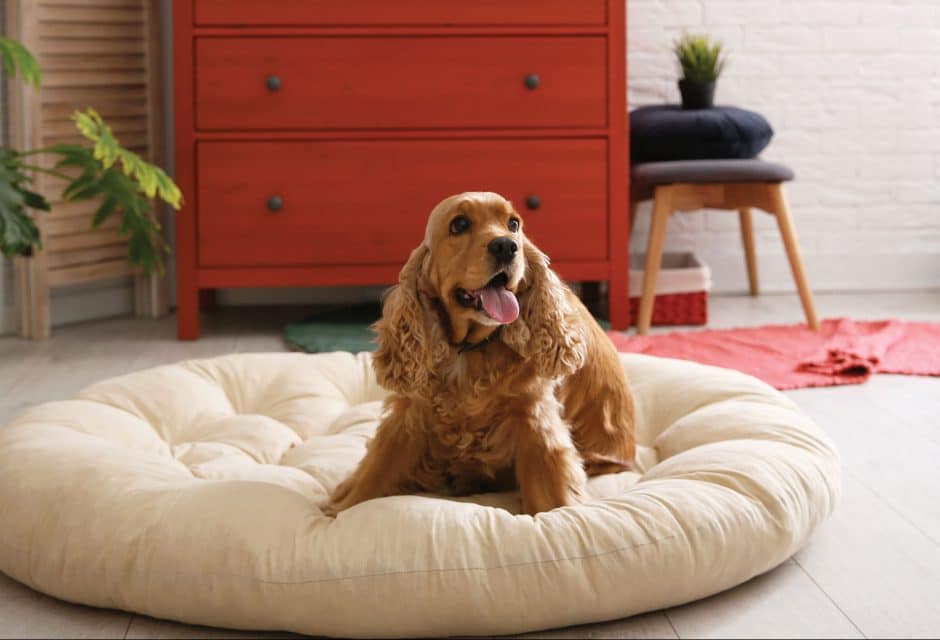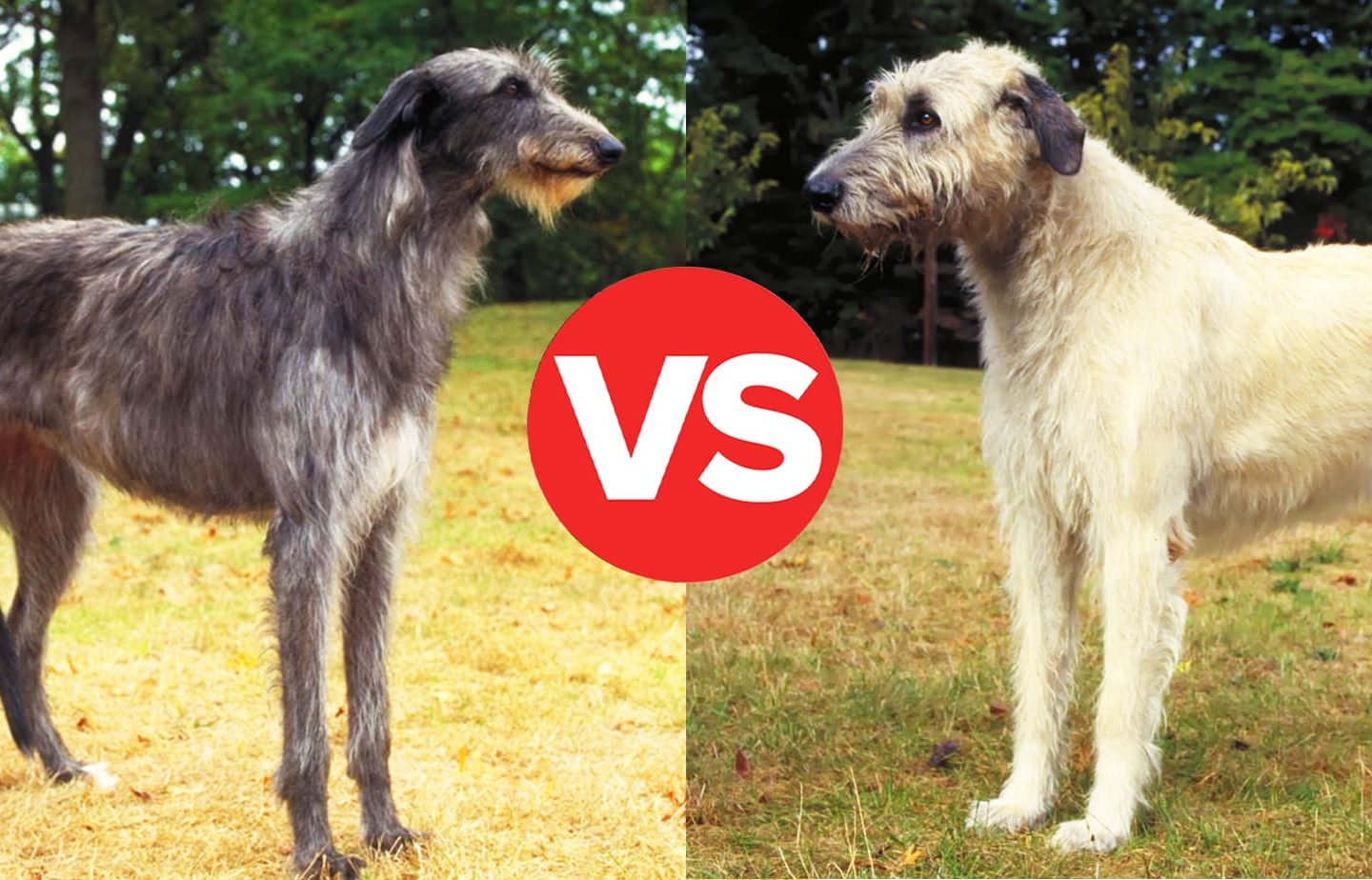
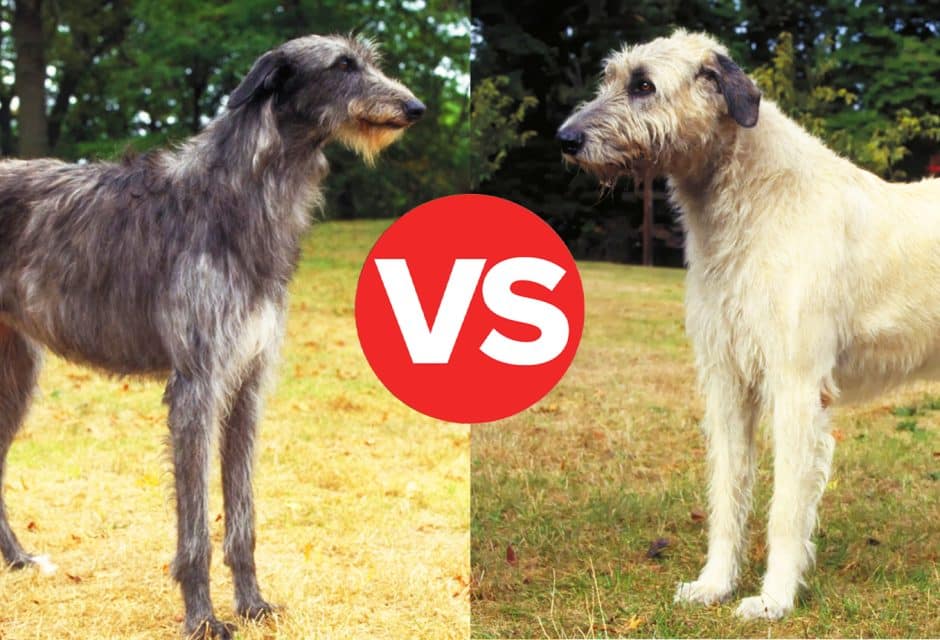
What’s the Difference Between the Scottish Deerhound and the Irish Wolfhound?
Get the lowdown on the breed standards, history, and origins of the Irish Wolfhound and Scottish Deerhound!
Though very similar looking, these easy-to-confuse breeds have some key differences. Here are the main differences between the Scottish Deerhound and the Irish Wolfhound:
Size
- Scottish Deerhound: The smaller of the two, Scottish Deerhound typically stand 28-32 inches tall at the shoulder and weigh 75-110 pounds.
- Irish Wolfhound: Generally larger, standing 30-34 inches tall and weighing 105-120 pounds.
Build
- Scottish Deerhound: Sleek, athletic build with a graceful appearance.
- Irish Wolfhound: Sturdier and more powerful, with a strong, robust frame.
Coat
- Scottish Deerhound: Rough, wiry coat that is typically grey, brindle, or blue.
- Irish Wolfhound: Harsh, wiry coat that can be a variety of colours, including grey, fawn, and black.
Temperament
- Scottish Deerhound: Gentle, friendly, and more reserved; tends to be good with families.
- Irish Wolfhound: Known for their calm and affectionate nature; often described as gentle giants.
Purpose
- Scottish Deerhound: Bred primarily for hunting deer; excellent coursing ability.
- Irish Wolfhound: Originally bred for hunting wolves and protecting livestock; used as a guard dog.
Lifespan
- Scottish Deerhound: The longer lived of the two breeds; average lifespan of 8 – 11 years.
- Irish Wolfhound: Generally shorter lifespan, around 6 – 10 years.
Exercise Needs
- Scottish Deerhound: Requires regular exercise and enjoys running.
- Irish Wolfhound: Needs moderate exercise; enjoys walks and has a more laid-back demeanor.
History
- The Scottish Deerhound is noted for its history in Scottish culture, while the Irish Wolfhound is tied to Irish folklore.
Recognition
- Both breeds are AKC recognized.
Let’s take closer look at both breeds.

Mary Bloom/American Kennel Cub
The Scottish Deerhound
Resembling a larger, coated Greyhound, the Scottish Deerhound is a keen and alert sight hound. One of the oldest breeds, the Deerhound possesses a preeminent hunting ability, and is often seen at lure coursing events. The hair on the body and neck is harsh and wiry, while the coat on the head, breast and belly is much softer.
Known centuries ago as the Scotch Greyhound, Rough Greyhound and Highland Deerhound, the Scottish Deerhound became a clearly identified breed in the 16th and 17th centuries. He was the best breed to use for the pursuit and killing of deer, and at the time, could be owned by no one of rank lower than an earl. While he possesses a quiet and dignified personality in the home, the Scottish Deerhound may try to chase any furry animals that run past him. For that reason, the breed should be exercised on leash or in a fenced area. The breed’s crisp, somewhat wiry coat, however, is exceptionally easy-care, requiring only brushing and occasional bathing. Take a look at their breed profile here!
- Hound Group; AKC recognized in 1886
- Ranging in weight from 75 to 110 pounds
- Ideal height ranges from 28 to 32 inches tall at the shoulder
- Deer hunter
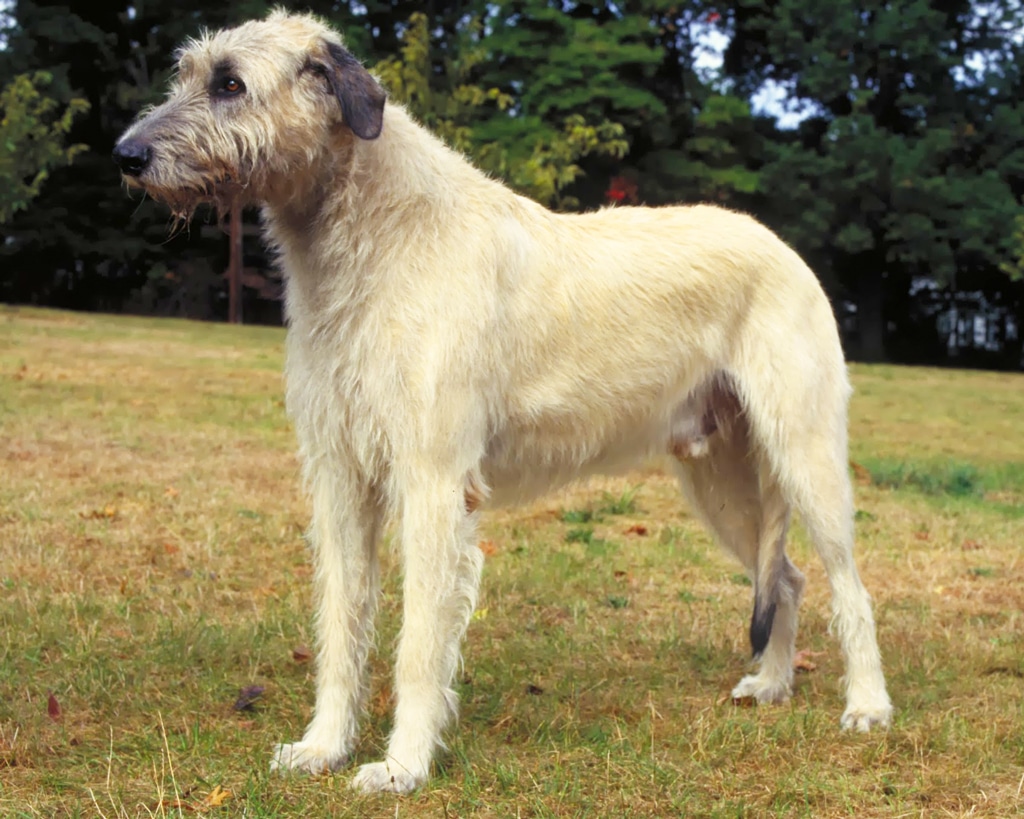
Mary Bloom/American Kennel Club
The Irish Wolfhound
An Irish Wolfhound must be of great size and commanding appearance. He has a large, muscular greyhound-like shape, and he is the tallest of dogs, but not the heaviest. A superb athlete and an endurance runner, an old Irish proverb describes him perfectly: “Gentle when stroked, fierce when provoked.”
One of the earliest recorded references to Irish Wolfhounds is in Roman records dating to 391 A.D. Often used as royal gifts, they hunted with their masters, fought beside them in battle, guarded their castles, played with their children, and lay quietly by the fire as family friends. They were fierce hunters of wolves and the oversized Irish elk, so good in fact that their prey disappeared from Ireland and the hounds fell upon hard times. By the 19th Century there were few Irish Wolfhounds left in Ireland. Although now primarily a family companion, the Irish Wolfhound will still instinctively give chase to fleeing prey. His large size commands more room, more exercise, and a bigger car. The breed’s harsh, natural coat requires regular brushing. Read their full breed profile here!
- Hound Group; AKC recognized in 1897
- Ranging in weight from 105 to 120 pounds
- Ideal height ranges from 30 to 34 inches tall at the shoulder
- Irish elk/wolf hunter, family companion
» Read Your Breed For more breed profiles, go to moderndogmagazine.com/breeds
Join the newsletter and never miss out on dog content again!
"*" indicates required fields
By clicking the arrow, you agree to our web Terms of Use and Privacy & Cookie Policy. Easy unsubscribe links are provided in every email.
